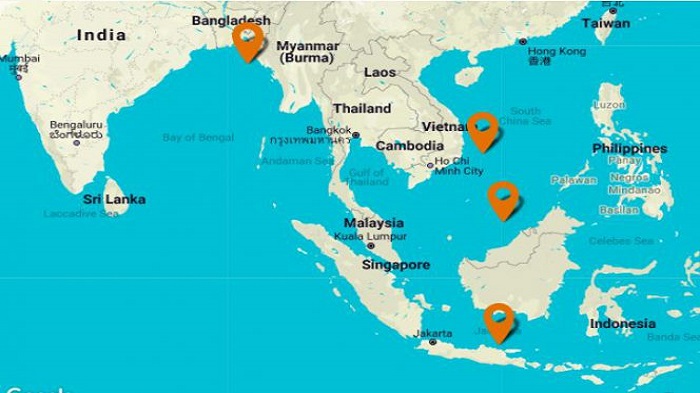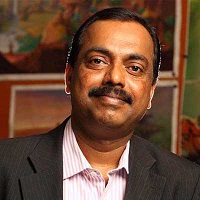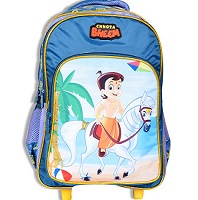
South East Asia’s (SEA) cultural diversity is known to everyone. For Indians, it has culturally become an Indian lake of content. Trade and investment remain central to India’s outreach to South-East Asia. As India engages with SEA audiences the strategic partnership, brand collaborations, expansion has increased over the years.
The demand for content is huge and what exactly the audience covet for can only be answered after exploring the market. India has a lot of potentiality in creating diverse content and there are yet various niche areas which are yet to be explored.
 For example, Baahubali team wouldn’t know it, before they explored Japan and found that Japan has become one of the countries who have an interest in Indian mythology and storytelling. On that occasion, Baahubali movie actor at a recent conference expressed that “What is important is how we can build that content, make it relevant to an Indian audience, and take it to international.” Therefore understanding the market and utilising the resources helps to create great and valued content.
For example, Baahubali team wouldn’t know it, before they explored Japan and found that Japan has become one of the countries who have an interest in Indian mythology and storytelling. On that occasion, Baahubali movie actor at a recent conference expressed that “What is important is how we can build that content, make it relevant to an Indian audience, and take it to international.” Therefore understanding the market and utilising the resources helps to create great and valued content.
With a similar vision in mind animated studios are spreading their footprints in the SEA market. SEA markets are the fastest-growing in both consumption and production of content and it will further expand as a hub for content development.
Be it content, be it studios all aim to become the elephant in the room for marketers who are aiming and attempting to discover, build and monetise their audiences globally. Therefore Indian studios, which are spreading their footprints in SEA, are actually targeting markets for expansion. Apart from that, there are a lot of other reasons behind such a leap in the expansion which includes:

In conversation with AnimationXpress Toonz Media Group CEO P Jayakumar and Green Gold Animation CEO and founder, Rajiv Chilaka has expressed how they have expanded their footprints in SEA .
Why do you think, Indian studios are spreading their footprints in south-east Asia? Is it because for the content demand or studios aim for the global reach of their IPs?
Jayakumar: Over the past two decades Indian animation and special effects studios’ footprints have been growing progressively both in the region and all around the world, with studios positioning themselves initially as servicing studios, but as time has advanced increasingly, some have begun to develop into original IP production outfits also. The high production, animation and effects quality and extremely competitive costs that they offer have enabled them to attract attention from all sides, and more recently there is evidently heightened activity in South-East Asia, where there has been a surge in new studios emerging in such neighbouring markets as China, Korea, Malaysia, and Singapore to name a few. This growth within the whole region means more collaboration and co-production possibilities between studios, resulting in more win-win opportunities all around.
 Another important factor to note is that the animation and effects entertainment industry are in a very healthy and expansive situation, with more people consuming entertainment across the planet than ever before, and on and across more personal devices and mediums. The advances and spread of technology have resulted in a much higher demand for content and this has a direct knock-on effect to studios such as Toonz, soon to enter its 20th year of operation.
Another important factor to note is that the animation and effects entertainment industry are in a very healthy and expansive situation, with more people consuming entertainment across the planet than ever before, and on and across more personal devices and mediums. The advances and spread of technology have resulted in a much higher demand for content and this has a direct knock-on effect to studios such as Toonz, soon to enter its 20th year of operation.
Likewise, there is a drive to create IPs with a global reach to maximise distribution and satisfy demands of both regional Pay and Free-TV programming needs as well as large global entertainment networks and platforms and telcos who see the benefits of having an IP with global reach and appeal, and also with solid 360 opportunities attached. A strong and versatile IP enables revenues to be sourced not only from TV/Digital content rights and distribution exploitation, but also from Gaming and Licensing, for example, both offering to experience huge growth in recent years, and with strong indications that this is to continue.
 Chilaka: I believe it is for both. For Green Gold, it is easier to reach out to neighbouring countries and sell our IPs given the proximity and acceptance. Also, these are prime markets which have the potential and a dedicated target audience for new and fresh content. Indian television content has already proved to be successful in these markets and hence Indian Animation hopefully will also do well.
Chilaka: I believe it is for both. For Green Gold, it is easier to reach out to neighbouring countries and sell our IPs given the proximity and acceptance. Also, these are prime markets which have the potential and a dedicated target audience for new and fresh content. Indian television content has already proved to be successful in these markets and hence Indian Animation hopefully will also do well.
What are the opportunities/ disadvantages for studios spreading footprints in South-East Asia?
Jayakumar: There are many opportunities especially as the region has certainly become a more powerful, structured and stronger industry, creating an attractive image and gaining respect as a content developer, provider and producer, all around the globe. What is important to bear in mind, is that IPs need to have a certain level of universal appeal to travel both within the region, and around the world, crossing cultural barriers. Being aware of what works in different regions, and what is culturally accepted and not-accepted is key. In such genres as comedy, finding a happy medium that works across different cultures is a fine line and can mean acceptance or rejection, and hence the success or failure of a TV series, film or digital production.
 Chilaka: I see this only as an opportunity. We get to work in new markets and create opportunities to associate not only in animation but explore merchandising, licensing and events sector. South East Asia is a growing territory that has immense potential. Also, collaborations can be done with South East Asian studios who want to enter into India with their content.
Chilaka: I see this only as an opportunity. We get to work in new markets and create opportunities to associate not only in animation but explore merchandising, licensing and events sector. South East Asia is a growing territory that has immense potential. Also, collaborations can be done with South East Asian studios who want to enter into India with their content.
Both the brands have a strong presence in SEA. Is there any further expansion plan in South East Asia? If yes share the expansion strategy behind it?
Jayakumar: Toonz has a strong global footprint with offices across Asia Pacific region in India, Singapore and Auckland, and as far field as Los Angeles, London, Madrid, Moscow, Istanbul and Quebec. We firmly believe in having a strong regional presence so both have a firm understanding of each region, but also to offer a strengthened position to our partners who are largely global players, or players with at least a global interest.
Singapore is very important strategically for the Toonz Media Group and its different business divisions, and an important part of our commitment to the South East Asia region. Toonz has expanded significantly both into Singapore and South East Asia as a whole over the past years, and especially across the past months, announcing big strategic production, distribution, broadcast and licensing partnerships with key players in China such as Pacific Media Group and Alibaba, whose partnership was announced at Mipcom this year; in Korea with XrisP Co.Ltd for its co-production of The Story of Bookworm Gogo whose production is in full swing also with Malaysia’s Backbone Entertainment; also in Korea with Neon Creation, co-producing Dee Dee, The Little Princess, and in New Zealand with Whitebait Media with whom Toonz has produced the scientific adventure series Darwin & Newts.
We have recently announced our partnership in China with Pacific Media Group. We are planning to set up a JV studio in China along with licensing and merchandising activities and entertainment experiences. We are looking for a multi-fold increase in activities in China in the coming years

Chilaka: Chhota Bheem is popular in Singapore, Thailand, Malaysia and Indonesia. Hence it was the right strategy to set base in Singapore and the Philippines to promote the show and our upcoming shows as well as well as looking for new talent. For Green Gold, it is an important step to enter new markets and entertain more kids as we grow.
How SEA business has benefitted the brand?
Jayakumar: Singapore had always been regarded as one of the safest jurisdiction for intellectual property related businesses. This has significantly helped us in establishing the trust and reputation of our business during our early years. The government agencies such as EDB and MDA were extremely helpful in setting up media related businesses in the country. Singapore base has also helped us in establishing an easy business relationship with China, New Zealand and many other Asian countries.
Chilaka: We have got a very good response from these markets. In fact, Chhota Bheem has been topping the chart in Indonesia and equally growing in the rest countries as we speak. This is definitely helping the brand to create a footprint which will be further explored for our other shows and divisions.

As the balance for content power in Asian market transforms and the very coherence of the Asean comes under question, there will be always new demands on India. Further in conversation, Chilaka expressed that “Though the animation industry in India is relatively young in comparison to western markets, South East Asia has been in the animation business since the 1940s. It also has a very young and vibrant talent pool and a large untapped market for content creation and distribution. Though most outsourcing works in animation are from USA, Europe, Japan, China and South Korea, reports suggest that there are demands for new market explorations and partnerships in this region. Thus it is an emerging market and is showing promise.”
Whether it is Green Gold or Toonz Animation, an increasing number of them are setting up facilities and offices in SEA. Thus SEA has gained an allure of Indian lake like never before.

